-
Car Reviews
- All reviews
- Midsize SUVs
- Small cars
- Utes
- Small SUVs
- Large SUVs
- Large cars
- Sports SUVs
- Sports cars
- Vans
Latest reviews
- Car News
-
Car Comparisons
Latest comparisons
- Chasing Deals
It took almost four years to get here but Audi’s small electric SUV arrives with a few new tricks and an impressive pitch slipped just under the LCT threshold
Wedged into a currently busy launch schedule for Audi Australia is the Q4 E-tron, the Ingolstadt mothership’s first purely electric model and a latecomer to local showrooms after debuting in Europe in mid-2021.
It lobs a couple of weeks after facelifted Q7/Q8 and fortnight prior to the Q6 E-Tron, Audi’s electric figurehead underpinned by the new ‘premium’ PPE EV platform shared with technical cousin, the new high-voltage Porsche Macan.
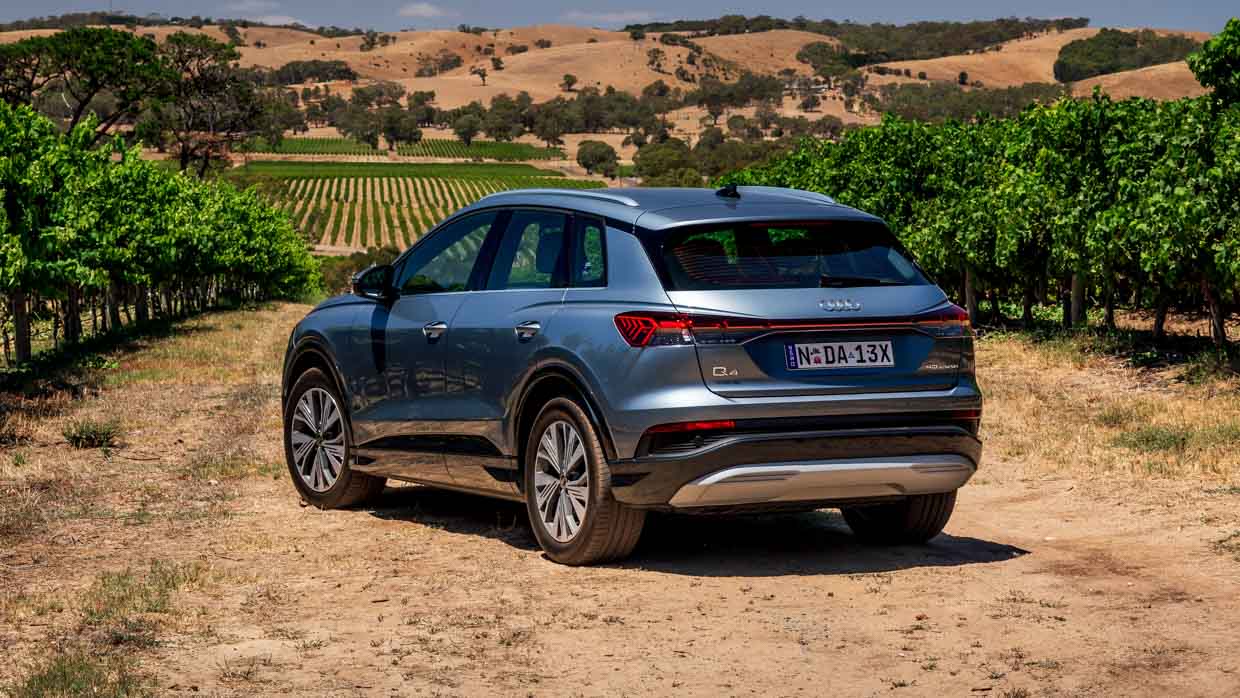
Pictured: the Q4 E-tron 45
But what might seem like yesterday’s news, one at risk slipping through the limelight shadows, is a pivotal model and one of huge importance for its Aussie importer.
The small electric SUV, which slips under the luxury car tax threshold in thriftier ‘45’ guises, has potential to be a volume-selling lynchpin of Audi’s lineup moving forward, and certainly key in negotiating the federal government’s forthcoming New Vehicle Efficiency Scheme waters.
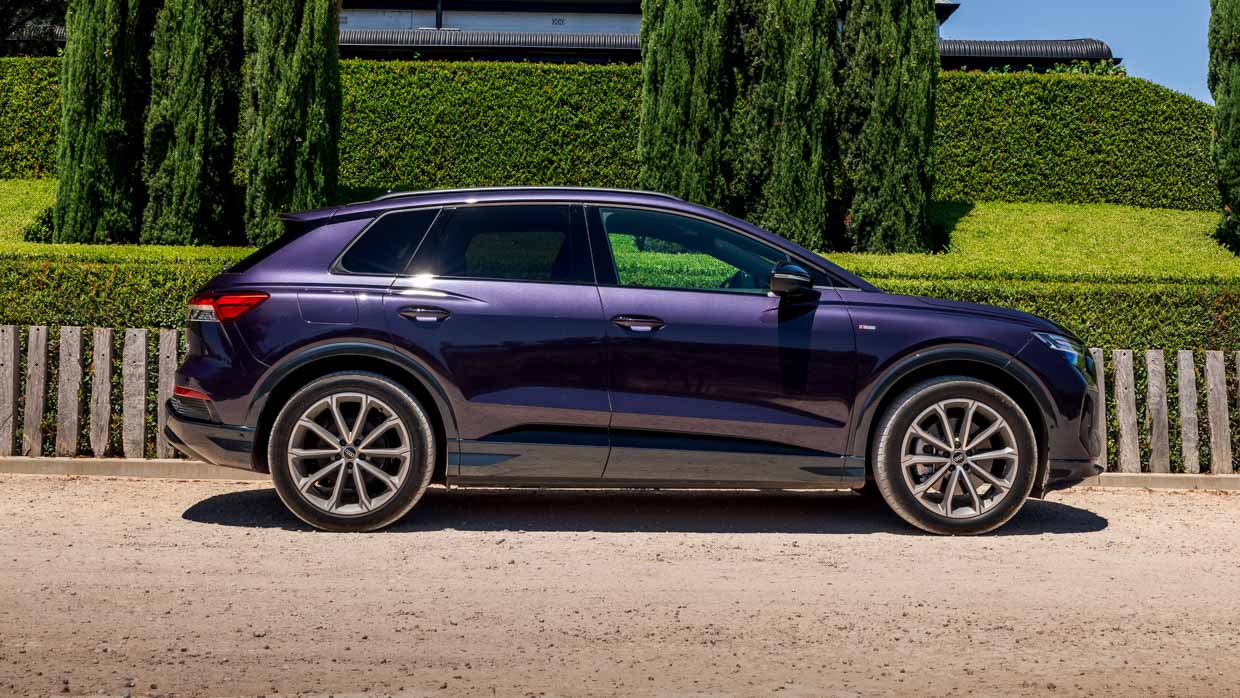
Pictured: the Q4 E-tron 55
But it’s no old hat. The reason for its Australian delay, Audi says, is a major lifecycle update that brings with it an upgraded battery with optimised cell chemistry, a new rear motor, improved peak DC charging, and new suspension tuning.
None of these are inconsequential quivers in a contemporary EV model’s bow.
And while the Volkswagen Group’s MEB platform upon which the Q4 E-Tron is built isn’t as vaulted as the forthcoming Q6’s whiz-bang PPE underpinnings, its relatively recent 2019 debut means it’s much more contemporary than the 13-year-old MQB family toolbox of Q3, which is Q4 E-Tron’s internal combustion alternative.
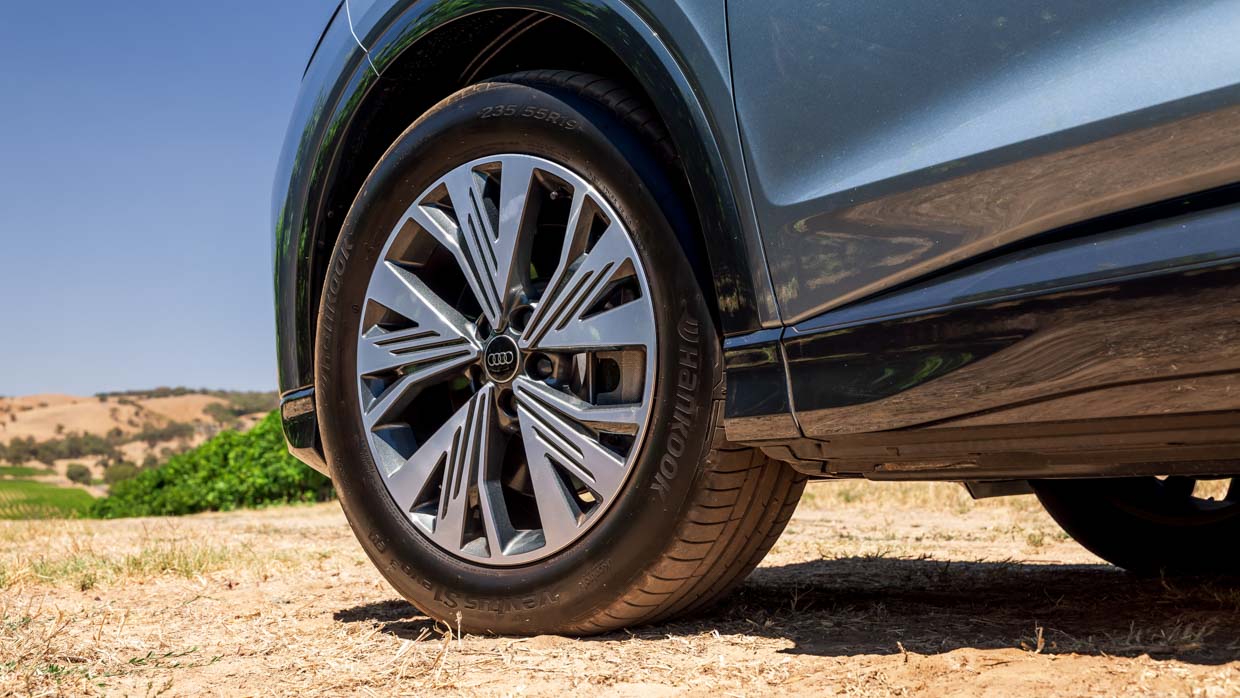
Newcomers in Volkswagen’s ID line-up, Cupra Tavascan, and Skoda Enyaq and Elroq models are all MEB based.
At 4588mm in length, it’s slightly longer than a Q3 (4485mm) and categorically ‘small SUV’, though MEB affords, Audi says, midsize-SUV bootspace (520-535L) and nigh on large-SUV interior length (1830mm). And it’s wrapped in the brand’s customary choice of wagon or Sportback body styles in type trim levels to make a predictable variant quartet.
The lineup kicks off with the 45 wagon at $84,900, a handsome if stolid looker sat on 19-inch wheels. An added $1600 affords the 45 Sportback ($86,500), its swoopy coupe roofline, inch-larger 20s and bolder standard-fit S-line front and rear fascias – with slashing silver inserts – easily paying dividends in the more seductive aesthetic.
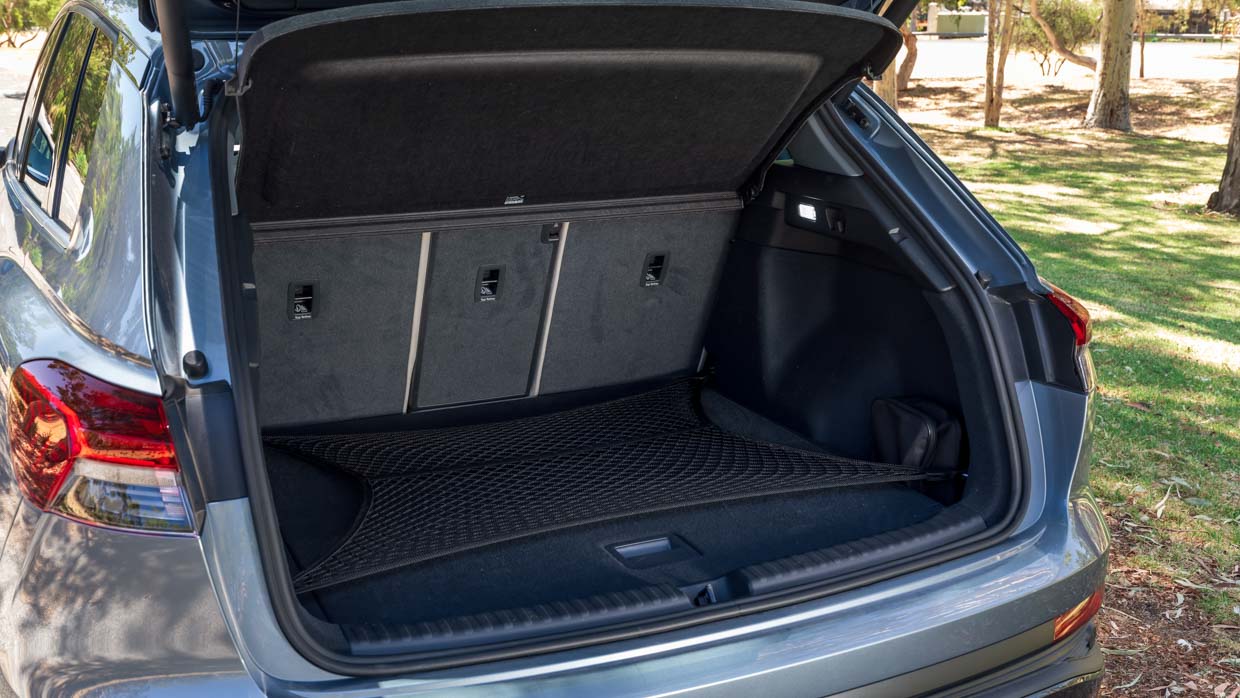
Strangely, it’s the Sportback that offers the larger (535L) boot space as a five-seater, though the wagon wins out with row two stowed (1490L versus 1460L).
Both 45s are single-motor rear-drivers plying 210kW and 545Nm from the newly revised 77kWh net (82kWh gross) lithium-ion battery with 400-volt architecture. Peak DC charging is 135kW for the rear-driven 45s.
The 0-100km/h claim 6.7sec for either 45 body style but it’s the slipperier Sportback – with its 0.26cd form – that yields the lineup’s best range of 540kms WLTP (16kms more than the 45 wagon).
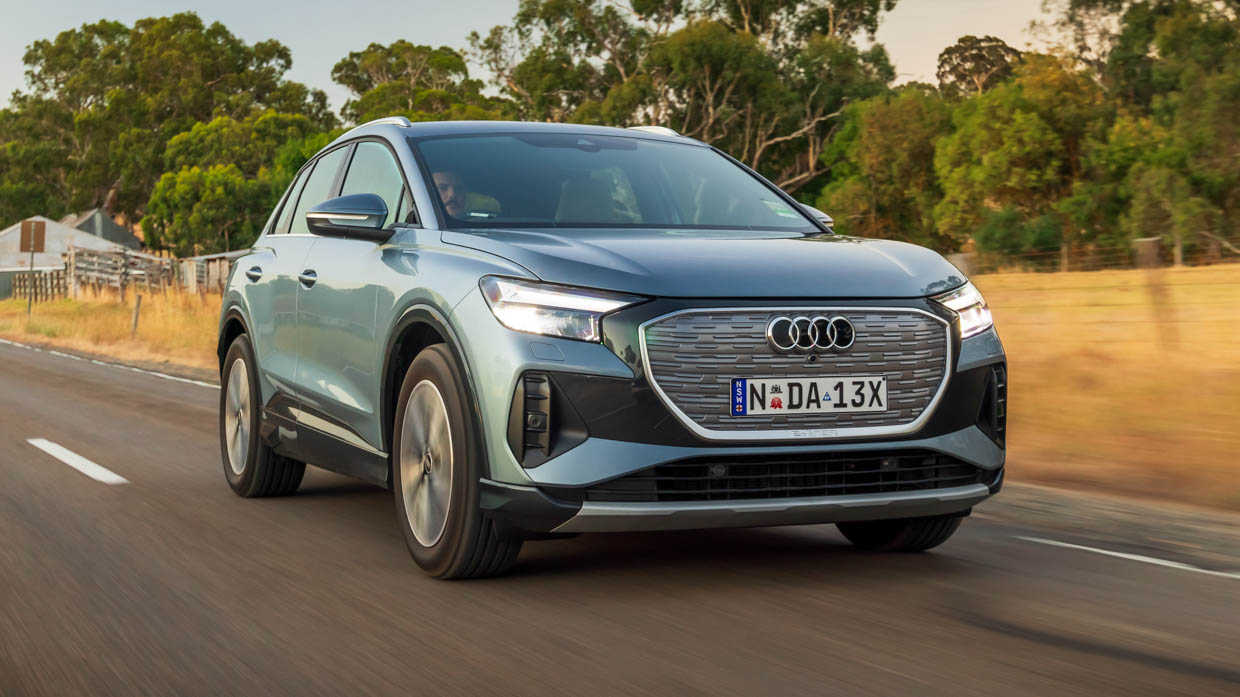
Stepping up to the dual-motor 55 spec bumps power to 250kW and adds 134Nm at the front axle, and, though academia suggests 679Nm potential, Audi stops short of making a combined torque claim.
The 55 rattles off a far brisker 0-100km/h claim of 5.4sec, though its appetite for electrons eats at peak range, yielding 503km (Sportback) and 488km (wagon).
But pace costs. At $105,900 and $107,500 for the wagon and Sportback, respectively, the twin-motor format commands a $21K premium. That latter exclusively fits 21-inch wheels.
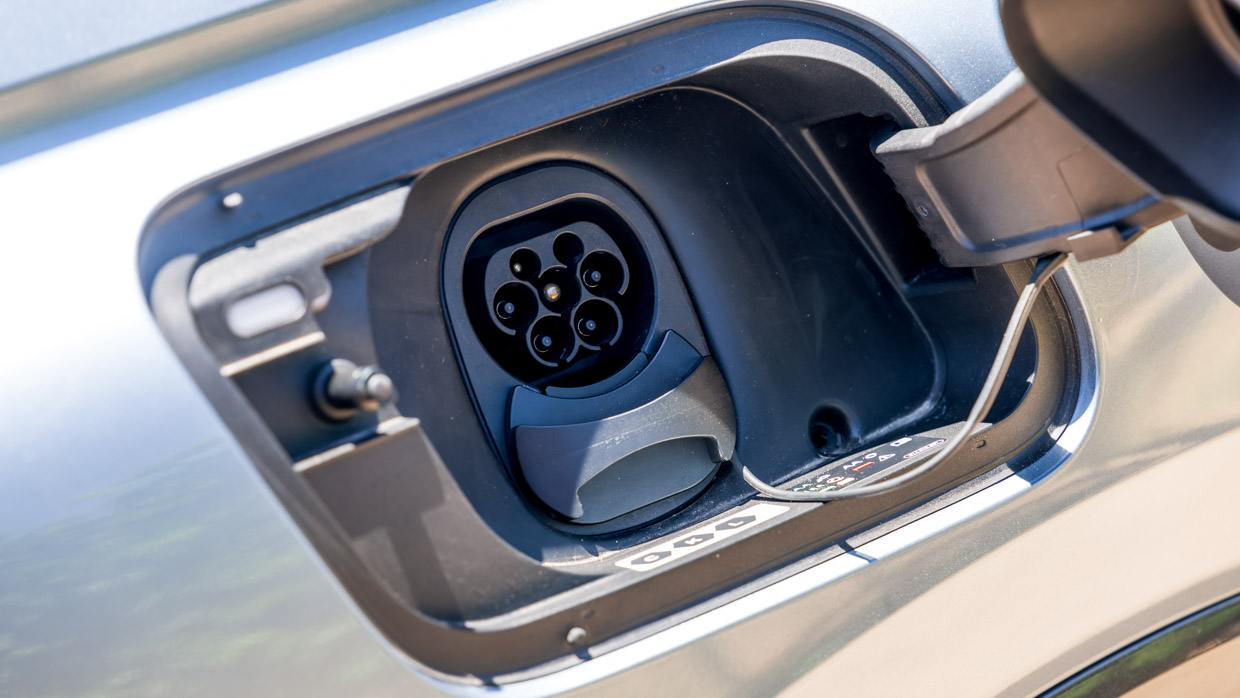
The dual-motor’s DC charging has been boosted in MY25 guise to a 175kW peak (with the same 77kWh net battery), though both 45 and 55 bring identical 28-minute claims for a 10-80 percent charge. Not bad, not great.
Softened ‘EV-alike’ aesthetic and bluff ‘thermal curtain’ grille apart, the Q4 E-Tron looks downright conventional outside, right down to the mechanical door handles. Fancy four-mode ‘dancing’ DLRs are the only conspicuous – and frankly nonessential – party gimmick worth noting.
It’s a similar story inside, where the Q4 gets a slightly freshened and fancied veneer atop a very familiar and generally friendly design language that could be lifted out of any four-ringed ICE model.
In an era where some EV designers still guzzle the red cordial too eagerly, the slightly prosaic theme is welcoming.
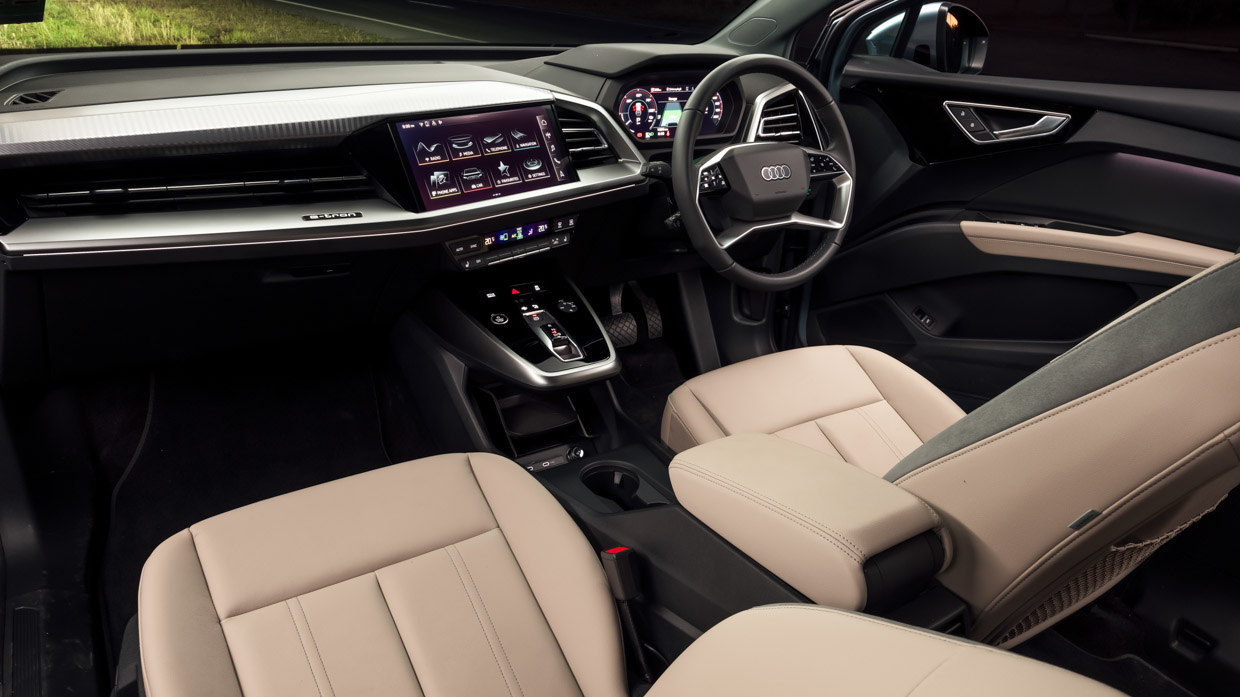
There’s still plenty of flashiness. The asymmetric dash fascia is certainly fussy, but still manages to be congruent and logical.
A start button, ‘transmission selector’, normal indicator/wiper/cruise control stalks and traditional usability will appeal to EV newcomer buyers who favour old-school familiarity.
Then Audi had to go balls-up and coat every control with haptic-touch tomfoolery.
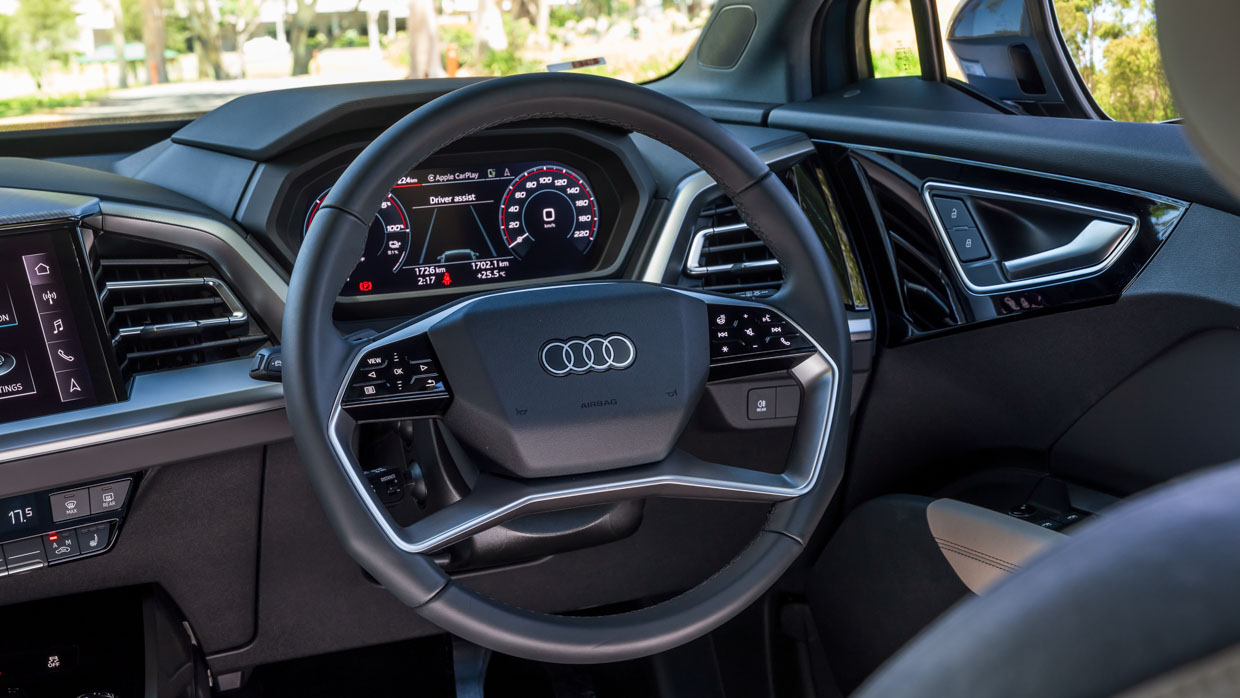
Audi overlord Volkswagen is well into backpedalling from haptic touch to physical buttons off the back of negative user feedback and clearly the memo didn’t hit Audi’s inbox.
The worst culprit is the Q4’s new-look wheel, and there’s not a dial or roller anywhere to be seen in the cabin. At least there’s some concession in the tidy rocker switchgear for the HVAC system.
The digital window dressing is oh-so-familiar Audi in skin design and content, with both grades fitting 10.25-inch driver’s screens with progressive fancy two- and three-mode content the higher you climb up the ladder. But content still looks a bit last-gen and appears very cluttered in most viewing modes.
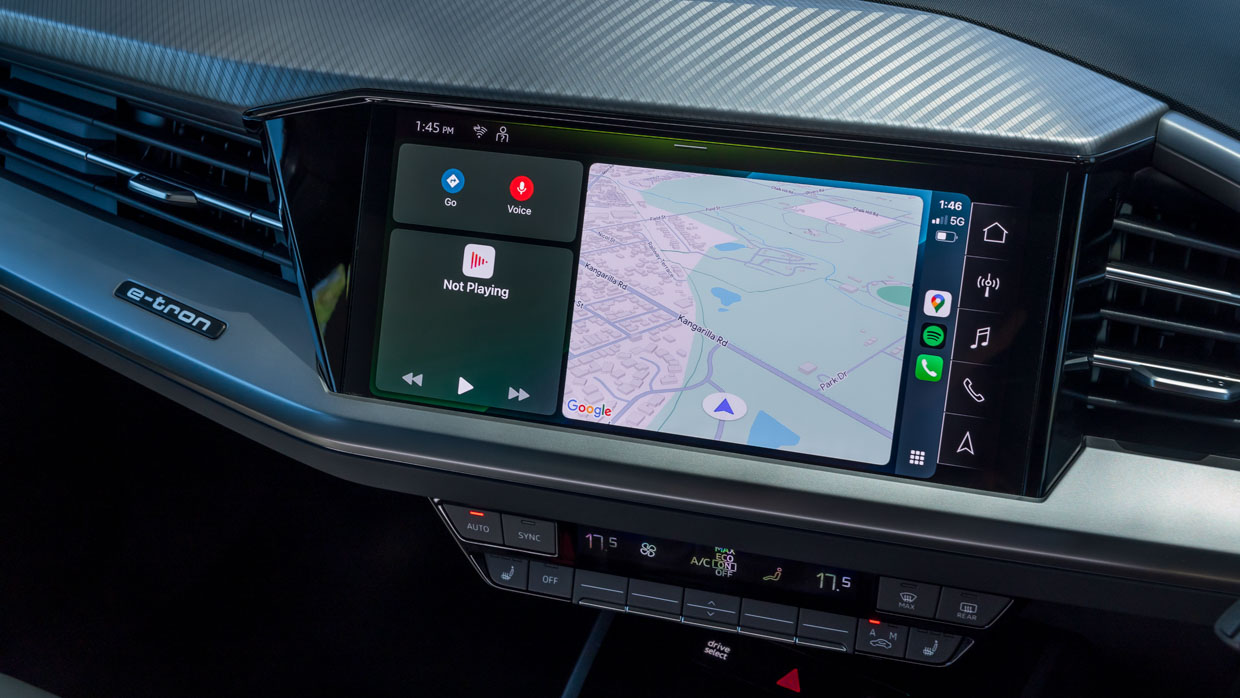
Media is 11.6-inch in all variants, with sharp resolution, quick processing and wireless Apple CarPlay and Android Auto as standard.
Niceties such as three-zone climate control and rather rich and punchy eight-speaker 180-watt sound is offered even in the lowest 45 wagon grade, though you have to stump up for the 55 to get a 360-degree camera.
All in all, the 45 and 55 have very similar interiors, save for the higher-grade’s slightly ‘squircle’ wheel and the graduation to electric sport seats from the mechanical 45 items (albeit with four-way electric lumbar).
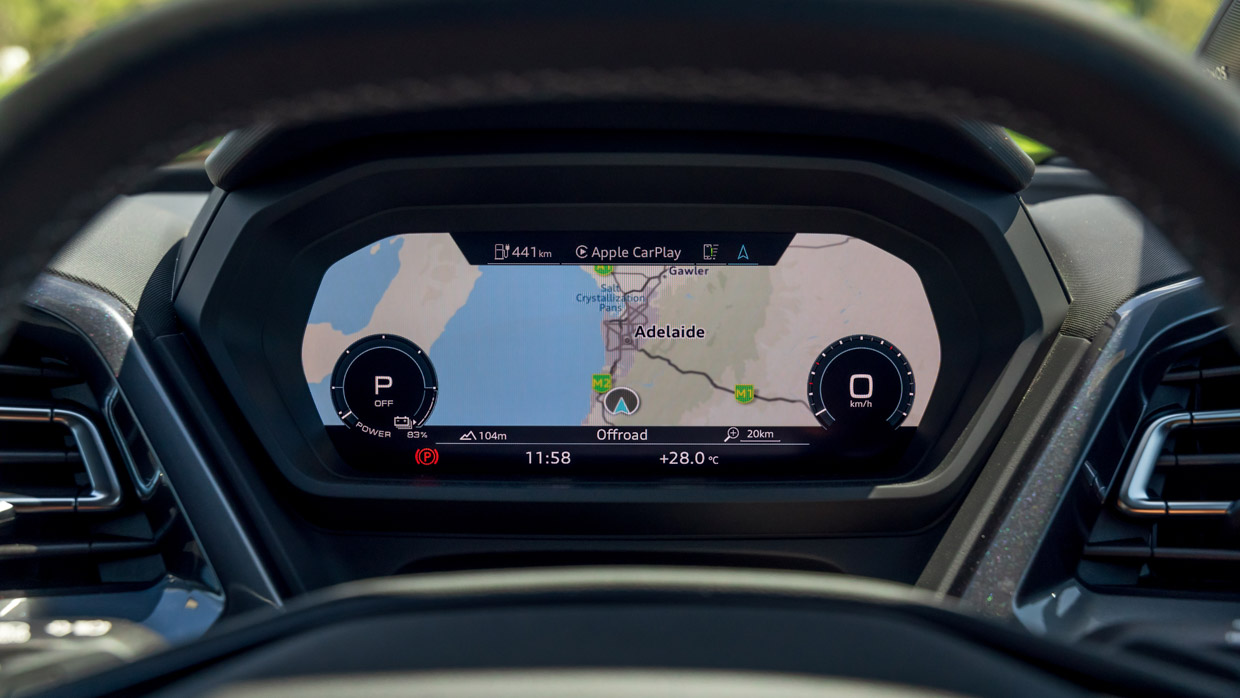
Standard seating in the 45s are fine, with reasonably supple leather appointed trim, while offering ample support and long-haul comfort.
You can opt for S Line sport buckets that add fabric and squircle tiller to the mix as a no-cost option. The 55s gets these more sculpted pews, if with the leather/faux-leather blend effect.
Whichever way you go, there’s a baked-in sportiness to the general ergonomics and control placement. Unlike older Audis, even the left-foot dead pedal is positioned correctly.
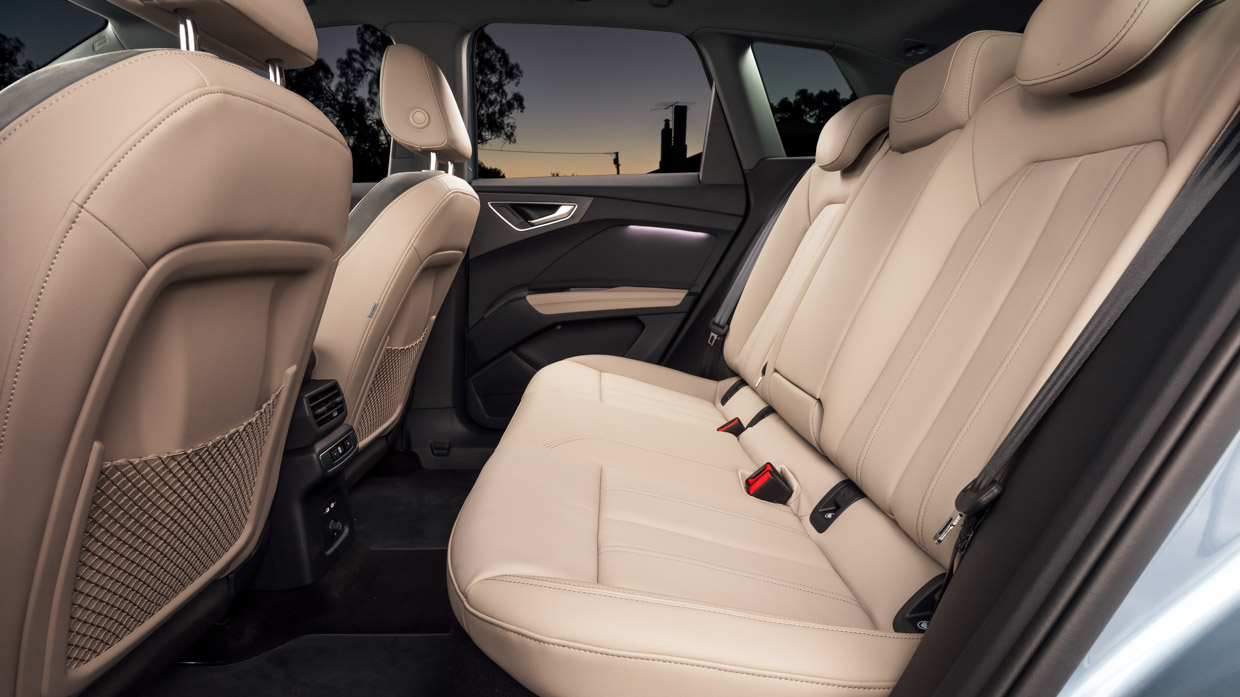
Delightfully inspiring are…the bottle holders. Seriously. Rather than sharing the door bins, the one-litre capacity cradles sit at the leading edge of the armrests, securing containers at around 45 degrees. It’s so simple, obvious and convenient that, yes, why didn’t anyone think of it before?
That ‘large-SUV’ packaging boast returns some very impressive legroom in row two, and headroom is airy enough even given the sloping Sportback ceiling. But the Q4 does remain more of midsizer in cabin width and, particularly on longer trips, the electric SUV is best served as a comfy four-seater.
It’s not as commodious as, say, a Hyundai Ioniq 5 and does feel all the part like a traditional ICE SUV with a slightly raised floor in order to accommodate the underfloor battery.
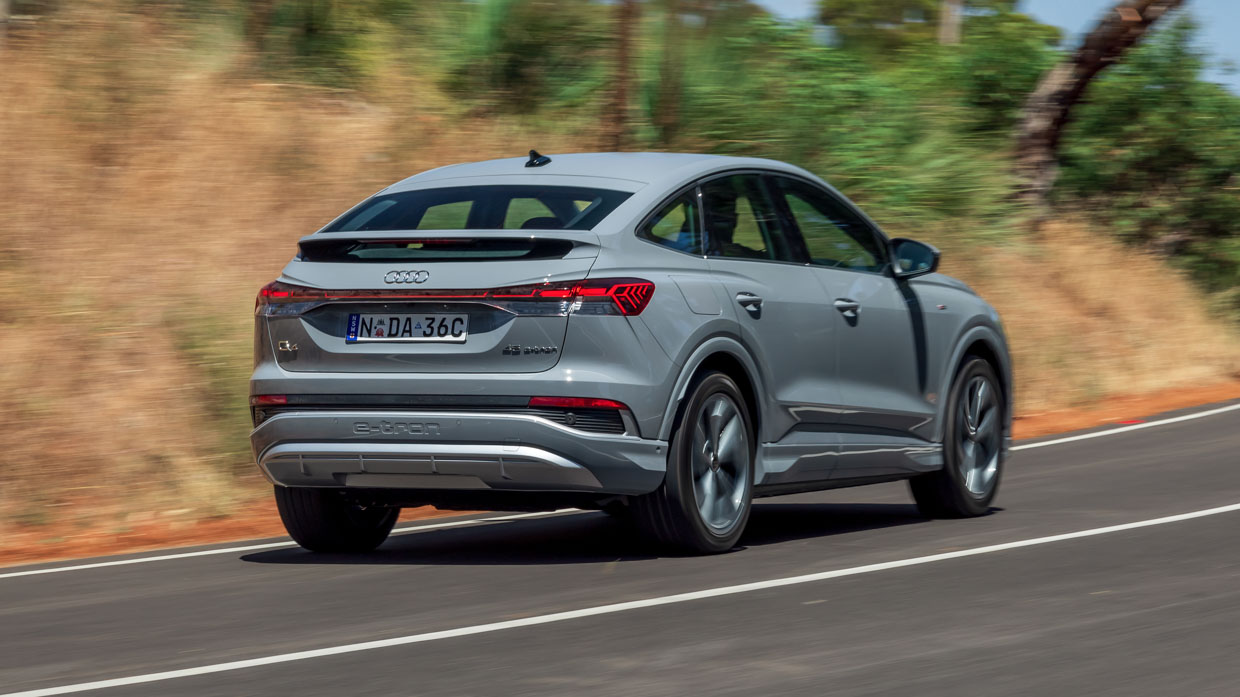
The sheer convention of the thing translates to the on-road experience, which was sampled at the Australian launch across the wonderful Adelaide Hills twisties, the dust-bowled South Oz wine region’s open backroads, and the lumber stop-start of about-town Adelaide.
And in both the 45 (Sportback) and 55 (wagon) trims, starting with the latter.
The Q4 is very quiet. And rides well, too. Having not driven the pre-update (Euro) Q4 it’s impossible to know what Audi’s chassis engineers tweaked, but where the tuning landed seems spot on for mixed Aussie conditions.
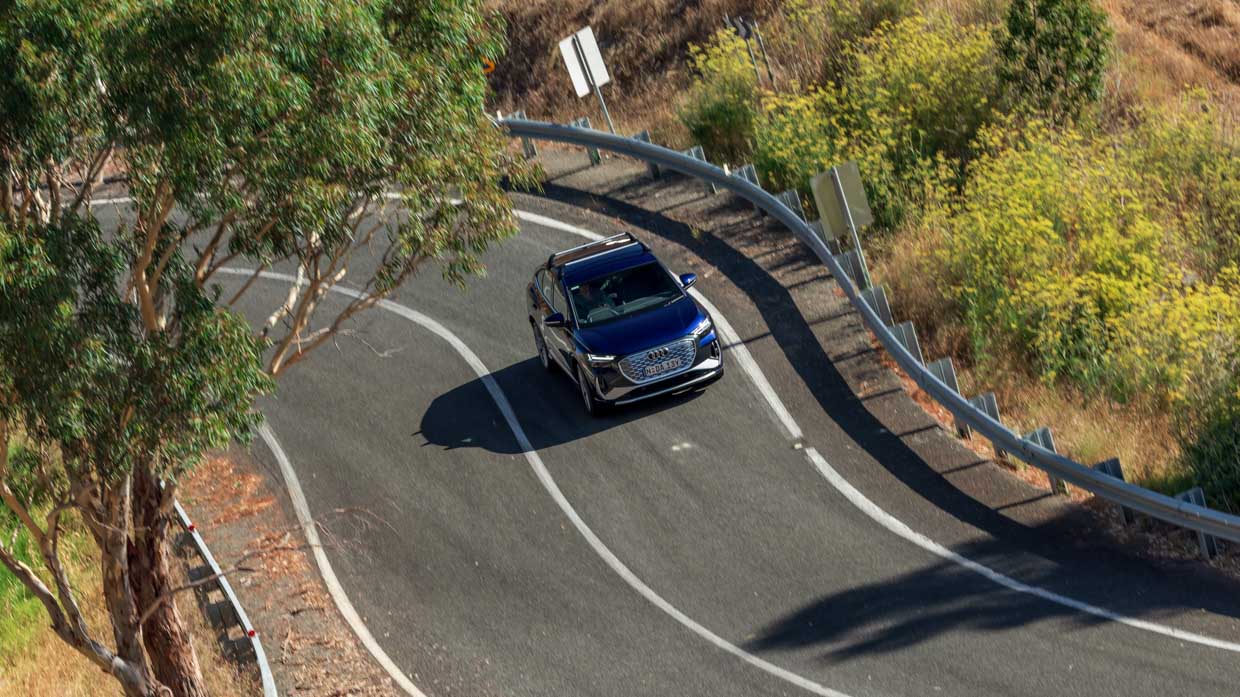
Almost in spite of the 20 inches of unsprung weight – both test cars – the 55 feels wonderfully compliant, bereft of jiggles and thuds, nicely supportive of the formidable plus-2.2 tonne kerb weight and free of even the tiniest noise or squeak.
The cabin feels wonderfully isolated from the road below in everything bar feel – bravo, Audi.
Climbing up into the hills – some of Australia’s greatest dynamic roads and the traditional home to competitive targa rally stages – the SUV’s considerable heft starts to become more and conspicuous.
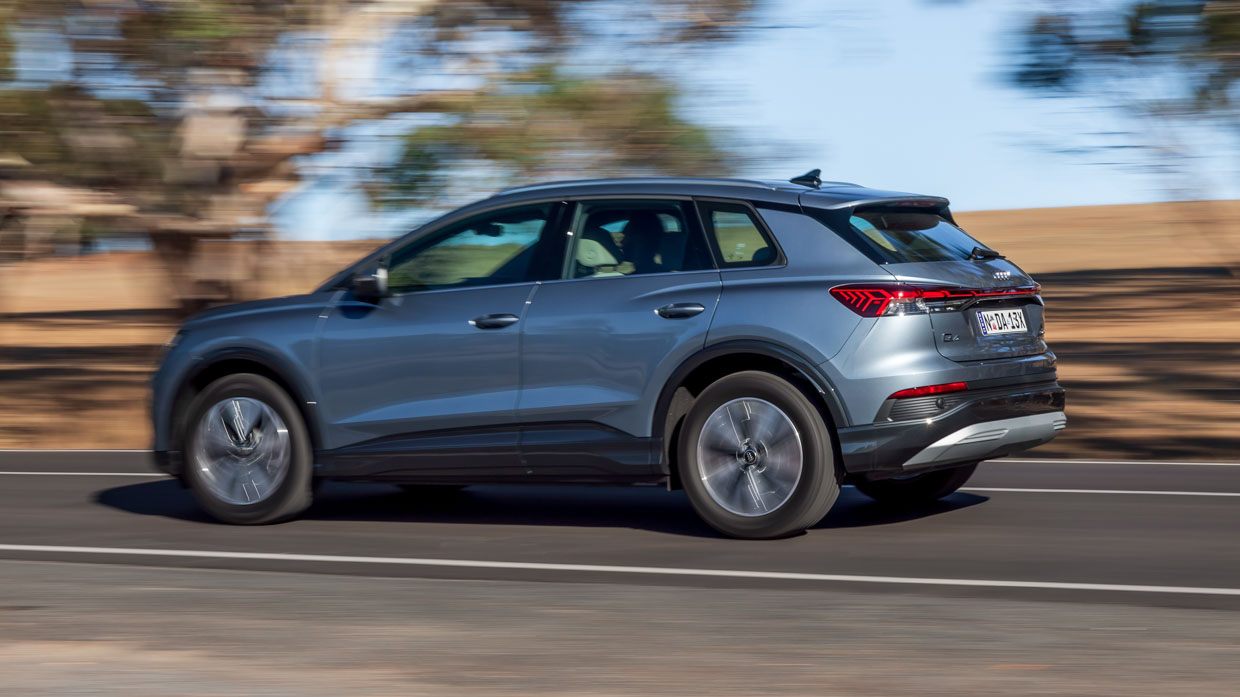
The 235mm front and 255mm rear rubber drums up some tremendous grip (to a point) and the chassis is far from ponderous, but it does feel like a larger, heftier rig than it actually is.
There are turn and swerve assist smarts at play, and subtly at that. But on roads this tight, blind and littered with Lance Armstrong wannabes – all the enthusiasm, none of the road speed – its slightly blunted nature does arrive at limitation in accuracy and response when you push on.
In fairness, there’s no ‘S’ or ‘RS’ sportiness in its pitch. And there’s a keen and cooperative balance in the mid-corner when you do push on.

But it’s in feistier drive modes, even Dynamic, the dual-motor powertrain musters up way more stonk and thrust than the chassis can comfortably and naturally match…even if point to point the 55 spec is bloody quick outright.
But it’s really the 55’s progressive (ratio) steering and the spongy brake pedal that’s letting the team down the most.
Audi’s offered progressive steering ‘smarts’ for decades as a premium option…and I can’t ever remember it improving upon the control, precision or feel of the regular, linear-ratio default design.
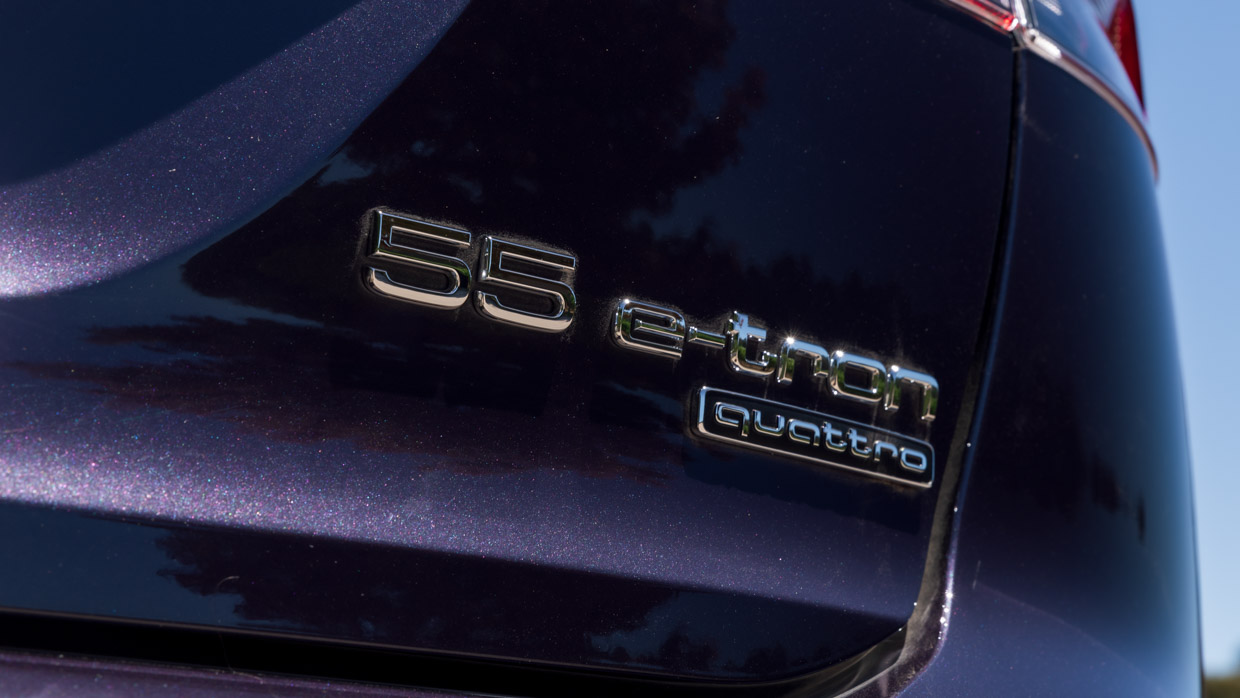
It might make parking easier and it might add stability on the highway, but it always seems, as here, to tarnish the steering’s fundamentals.
The Q4 also fits drum rear brakes – an exception to EVs but not entirely unusual. Audi reckons discs are unnecessary due to the regen action of the rear axle motor. While this mightn’t be the culprit for the mushy left pedal, the stoppers are a clear area in need of improvement.
Climb into the cheaper, lighter (around 100kg) 45 rear driver and dynamic improvement is immediate and surprising. The regular direct-ratio steering is noticeably clearer, more communicative and more accurate.
It points into corners a little better, and paired with more modest power and slightly dulled punch, the 45 Sportback package feels a lot more fluid by the seat of the pants. (At 10.2m, the 45 turning circle is also much tighter than the 11.5m 55 spec.)
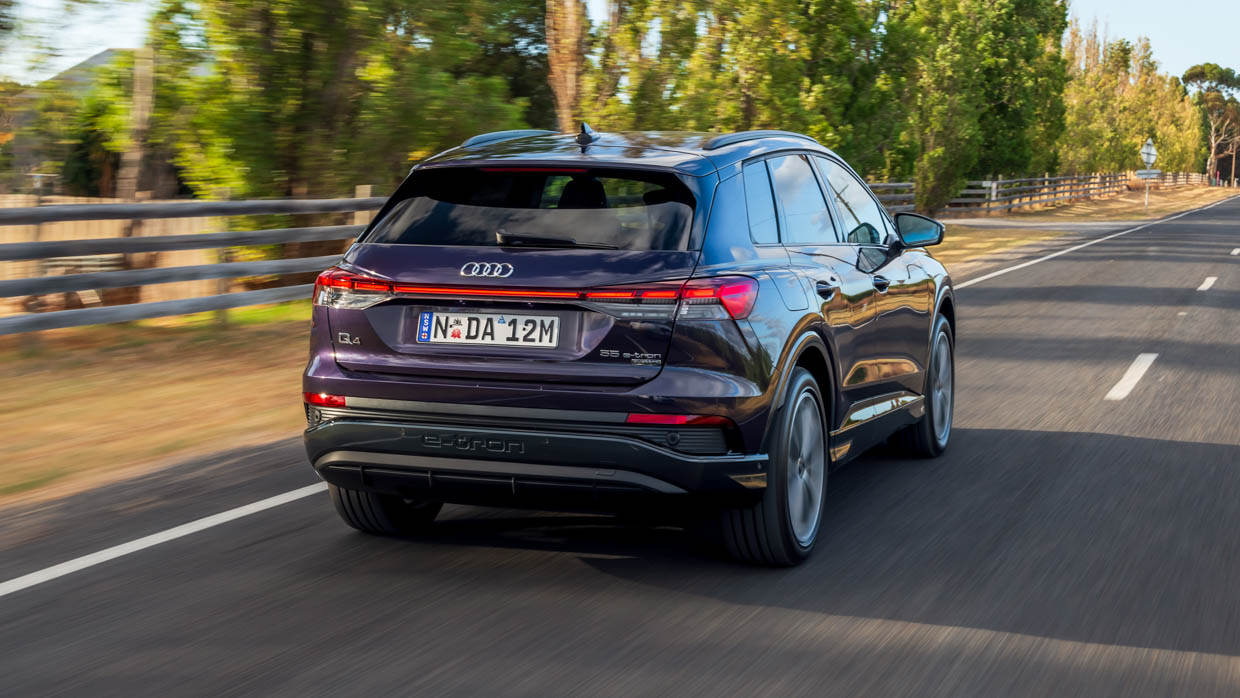
Nor does ceding 40kW present much detriment. This is still a small-stature vehicle doling out 545Nm. And while it’s no rocketship, it’s much swifter than Audi’s most modest electric vehicle recipe ought to be.
It doesn’t reasonably want for any added herbs, because what it offers suits the rest of its package very neatly indeed. Without sympathy and with a red rag waved, consumption is an indicated 18kWh per hundred or thereabouts (against an advertised 16.9kWh claim).
Already this combination of platform, battery, motor and weight is proving vastly more efficient than the vaulted, lumbering ICE-chassis Q8 E-Tron, which regularly sails well beyond 20kWh/100kms.
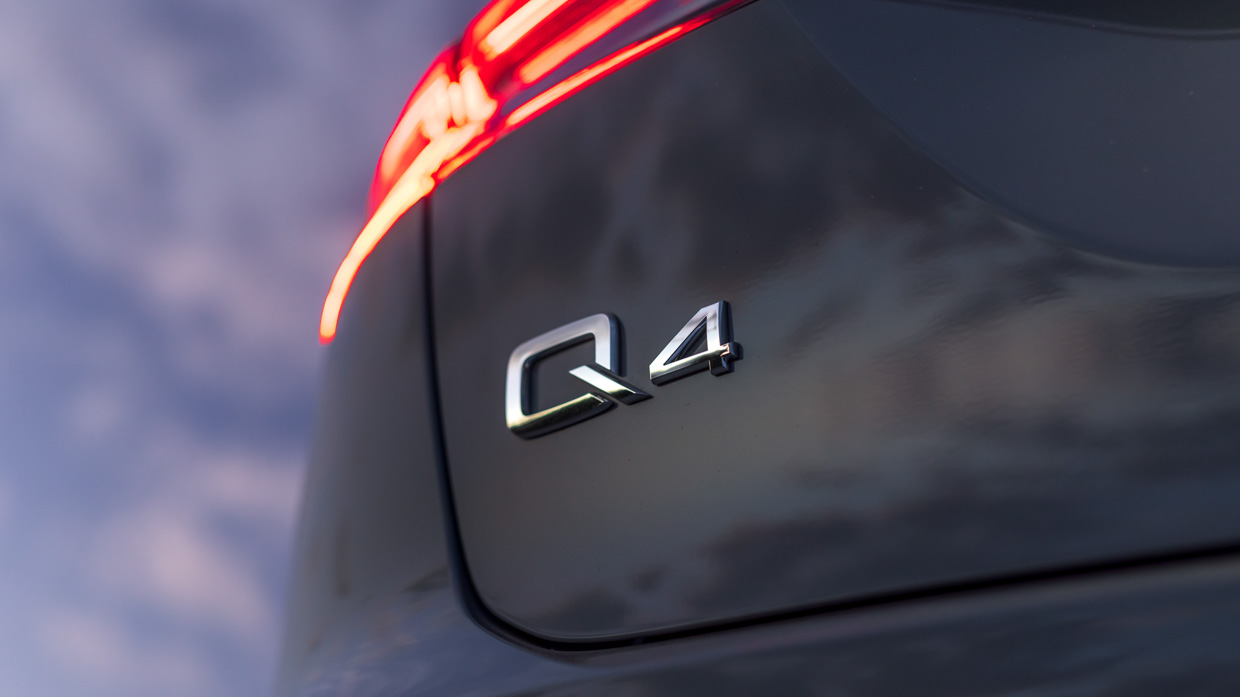
Like the 55, the 45 offers six different drive modes (inclusive of configurable Individual) and the walk-up from mild to wild-ish is notable if subtle.
Brake regeneration, too, is progressively stepped, from virtually no motor braking whatsoever to quite strong, using the wheel-mounted paddles. There’s also a ‘B’ mode for almost one-pedal response around town.
And efficient it most certainly can be. During the final stage of the launch drive program, a leisurely 40-minute eco-stroll from the McLaren Vale wine region to the centre of downtown Adelaide, the on-board computer displayed an impressive 13kWh/100kms.
Unlike some of Audi’s electric forebears, the Q4 45 rear-drive appears well poised to match its 540km range claim.
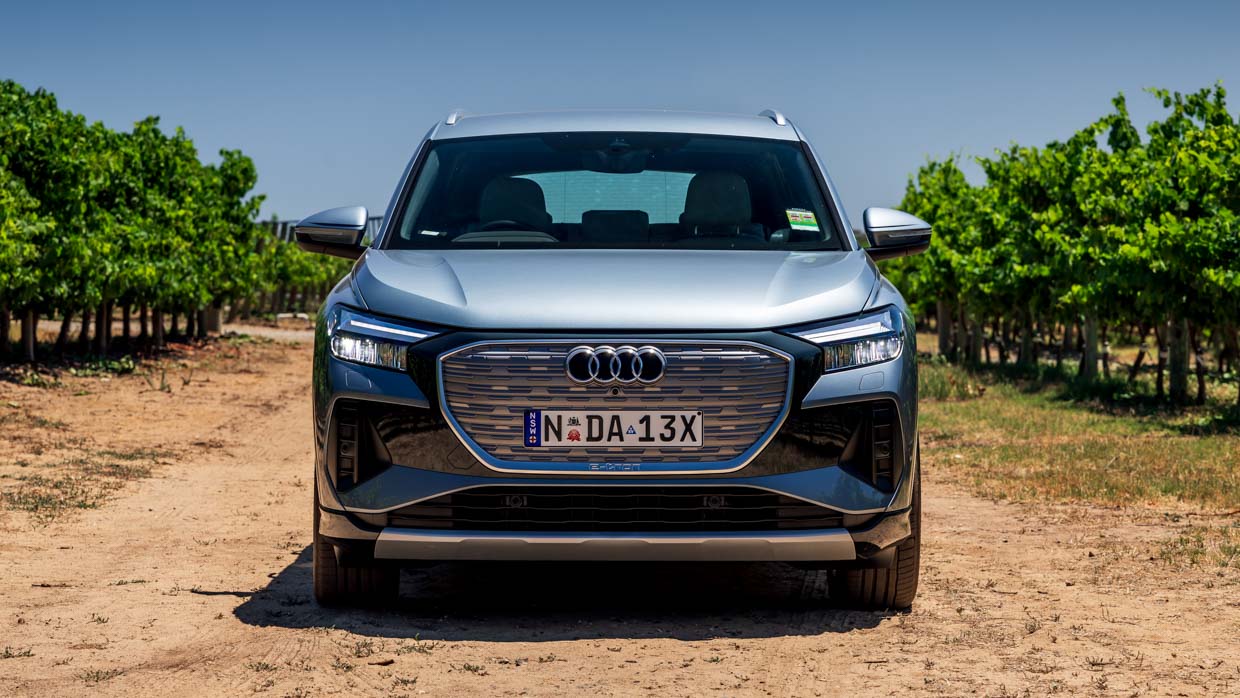
The underpinning takeaway is that the Q4 E-Tron – and the more-affordable 45 grade in particular – feels very well sorted. And this is really emphasised by just how pleasingly transparent its active safety and driver assistance systems are calibrated.
The Q4 was awarded five-stars by ANCAP back in 2023 … for the New Zealand release. And while it’s not to be assumed that the Aussie spec will naturally inherit the same score under the current 2025 protocols, the breed is certifiably safe according to the ANCAP regime.
Across a few hundred kilometres of every type of driving imaginable, the only triggered experience was the occasional silent shimmy through the steering wheel of the lane departure warning system. It’s simply far superior to the lion’s share of annoying, dysfunctional Chinese-made EVs out there right now.
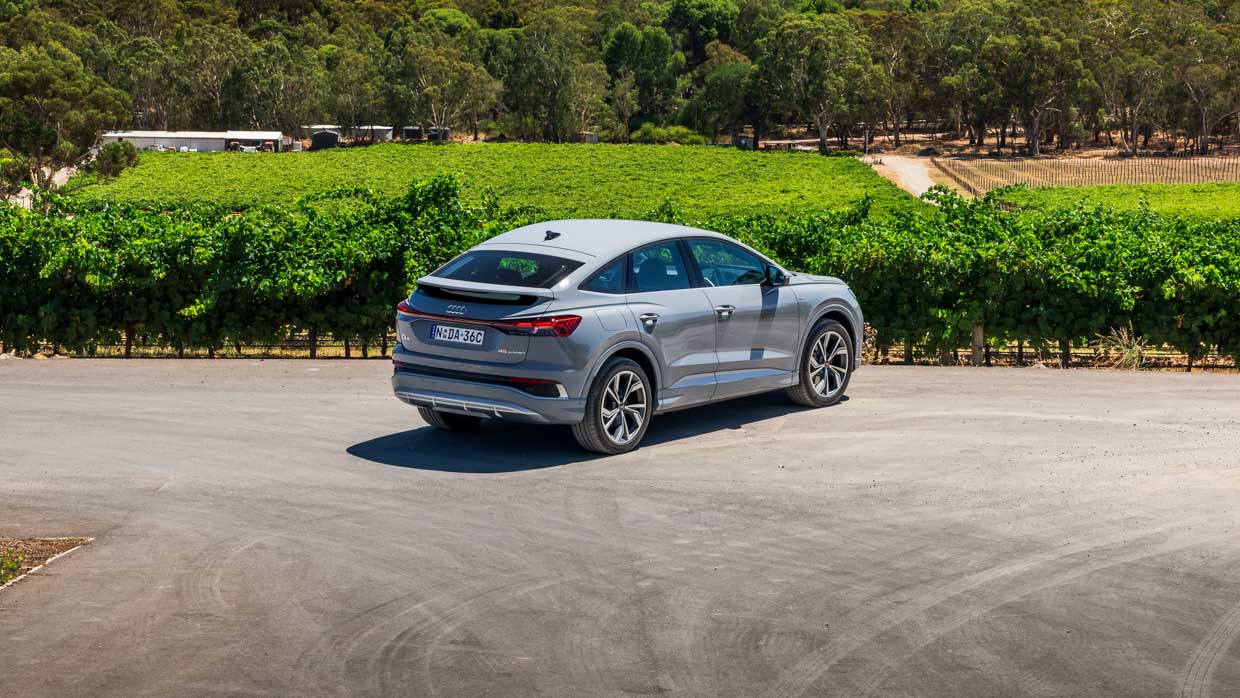
In fact, that’s the theme here. Sure, there’s a lot of electric choice for far less coin out there right now than the Q4 E-Tron 45’s $87K entry point. But that Audi is that much better in so many ways that the ask seems wholly justified and then some.
The easy pick of the litter is the 45 Sportback. The $1600 upcharge over the wagon is worth it in swagger alone, the boot is bigger, and it’s got the best range of the four available variants. It’s a genuinely great drive, fast or slow. And, at $2050 up front for six years of servicing, ownership is enticing, too.
Of all the current electric cars slipping under the LCT threshold, the Q4 E-Tron in 45 guise fronts up as one of the best. Even if it did show up fashionably late in order to get there.
Key specs (as tested)
About Chasing cars
Chasing Cars reviews are 100% independent.
Because we are powered by Budget Direct Insurance, we don’t receive advertising or sales revenue from car manufacturers.
We’re truly independent – giving you Australia’s best car reviews.
The estimate provided does not take into account your personal circumstances but is intended to give a general indication of the cost of insurance, in order to obtain a complete quote, please visit www.budgetdirect.com.au. Estimate includes 15%^ online discount.
^Conditions Apply
Budget Direct Insurance arranged by Auto & General Services Pty Ltd ACN 003 617 909(AGS) AFSL 241 411, for and on behalf of the insurer, Auto & General Insurance Company Limited(ABN 42 111 586 353, AFSL 285 571).Because we don’t know your financial needs, we can’t advise you if this insurance will suit you. You should consider your needs and the Product Disclosure Statement before making a decision to buy insurance. Terms and conditions apply.
Indicative quote based on assumptions including postcode , 40 year old male with no offences, licence suspensions or claims in the last 5 years, a NCD Rating 1 and no younger drivers listed. White car, driven up to 10,000kms a year, unfinanced, with no modifications, factory options and/or non-standard accessories, private use only and garaged at night.
^Online Discounts Terms & Conditions
1. Discounts apply to the premium paid for a new Budget Direct Gold Comprehensive Car Insurance, Third Party Property Only or Third Party Property, Fire & Theft Insurance policy initiated online on or after 29 March 2017. Discounts do not apply to optional Roadside Assistance.
2. Discounts do not apply to any renewal offer of insurance.
3. Discounts only apply to the insurance portion of the premium. Discounts are applied before government charges, taxes, levies and fees, including instalment processing fees (as applicable). The full extent of discounts may therefore be impacted.
4. We reserve the right to change the offer without notice.